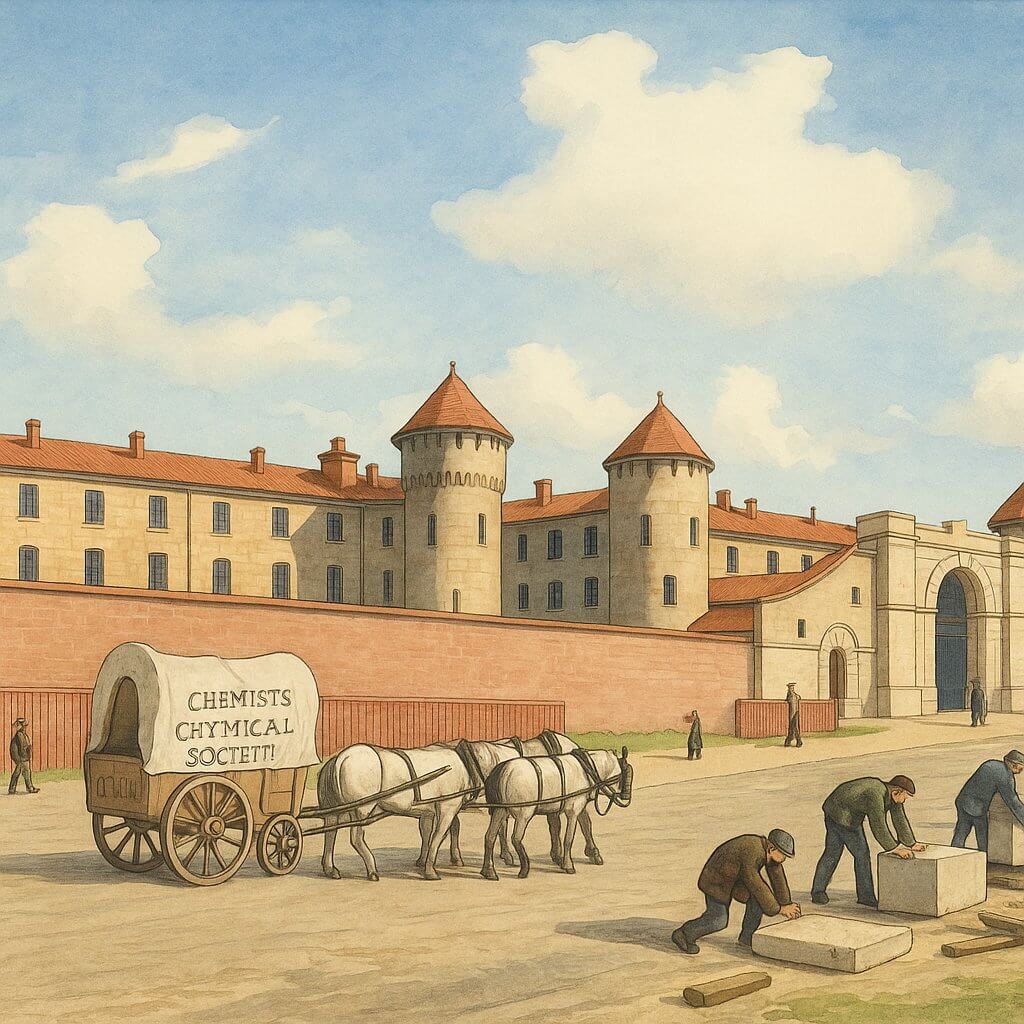
Millbank Prison (defunct)
A Monumental Beginning
Millbank Prison (app GPS: 51.48948, -0.1274) was one of London's most formidable institutions of the 19th century. Located in the City of Westminster on the north bank of the River Thames, it occupied a site that is today home to Tate Britain, Chelsea College of Arts, and the Millbank Estate. Constructed on marshy land near what is now the modern street of Millbank, the prison was designed to hold thousands of inmates and serve as a model of penal reform.The prison was commissioned by the National Penitentiary Society and opened its doors in 1816, after a troubled and expensive construction period. It became Britain's first national penitentiary, built to reflect a new approach to incarceration based on surveillance, isolation, and moral rehabilitation.
An Imposing Structure
Millbank Prison was built in a hexagonal radial design, with a central watchtower and six pentagonal wings radiating outward. This layout allowed guards to monitor prisoners efficiently from a central point. Enclosed by a large moat-like ditch and surrounded by tall, grim walls, it was intended to be both intimidating and impenetrable. The vast structure was built on what had once been flood-prone riverside marshland. Despite early hopes, the prison was plagued with dampness, disease, and structural instability. These issues led to ongoing maintenance problems throughout its life.Gateway to Exile
Millbank Prison became notorious not only for its size and severity but also for its role in convict transportation. Between the 1810s and the 1860s, prisoners sentenced to transportation to Australia were held at Millbank before boarding ships that took them down the Thames and onward to penal colonies halfway around the world. This grim journey began at Millbank Pier, where convicts would be loaded onto riverboats and ferried to larger ships at anchor. From there, they faced months-long voyages to distant lands - often for petty crimes by today's standards.Decline and Demolition
By the late 19th century, Millbank Prison had outlived its usefulness. The rise of other prisons, combined with the end of large-scale convict transportation and the institution's persistent structural issues, led to its closure in 1890. Demolition began soon after, and the land was repurposed for new civic and cultural uses.Tate Britain, which opened in 1897, now occupies part of the site. The Royal Army Medical College (now part of the Chelsea College of Arts) also took over a portion of the land. Interestingly, the Millbank Estate, a residential complex built at the turn of the century, was constructed using bricks salvaged from the prison's ruins.
Remnants and Legacy
Though the prison itself has vanished, careful observers can still find traces of its past:- A section of the old perimeter ditch remains between Cureton Street and John Islip Street - now a green space for local residents.
- A circular stone bollard near Millbank Pier marks the site from which prisoners were transported to Australia.
- The street layout near Tate Britain subtly echoes the hexagonal structure of the former prison.
- In some nearby buildings, reused prison bricks can be seen in the fabric of walls and façades.
A Dark Symbol of a Changing Era
Millbank Prison stood for nearly a century as a symbol of both reform and punishment. It reflected a transitional moment in British penal history - an attempt to bring order and morality to incarceration, while still upholding the harsh judgments of the time. The very ground on which today's art lovers walk at Tate Britain was once the site of despair and discipline.Though its walls are long gone, Millbank Prison's story remains embedded in the riverside soil of Westminster. It is a stark reminder of a time when London's justice system reached across oceans, and when a prison could span not only blocks of the city - but whole continents.
Quick Facts
- Name: Millbank Prison
- Location: Millbank, City of Westminster, London
- Operational: 1816 - 1890
- Primary Function: National penitentiary and departure point for transportation to Australia
- Architect: William Williams (with alterations by Thomas Hardwick)
- Structure: Hexagonal radial design with six pentagons surrounding a central chapel
- Capacity: Up to 1,000 prisoners
- Replaced By: Tate Britain, residential buildings, and streets like Ponsonby Place
- Traces Today: Plaques and a remaining bollard at Tate Britain; commemorative paving
- Heritage Note: Site of significant penal reform and early prison architecture
The historical Millbank Prison is  on the Map of Millbank, London
on the Map of Millbank, London

Square painting of Millbank Prison, London (View image in full size)